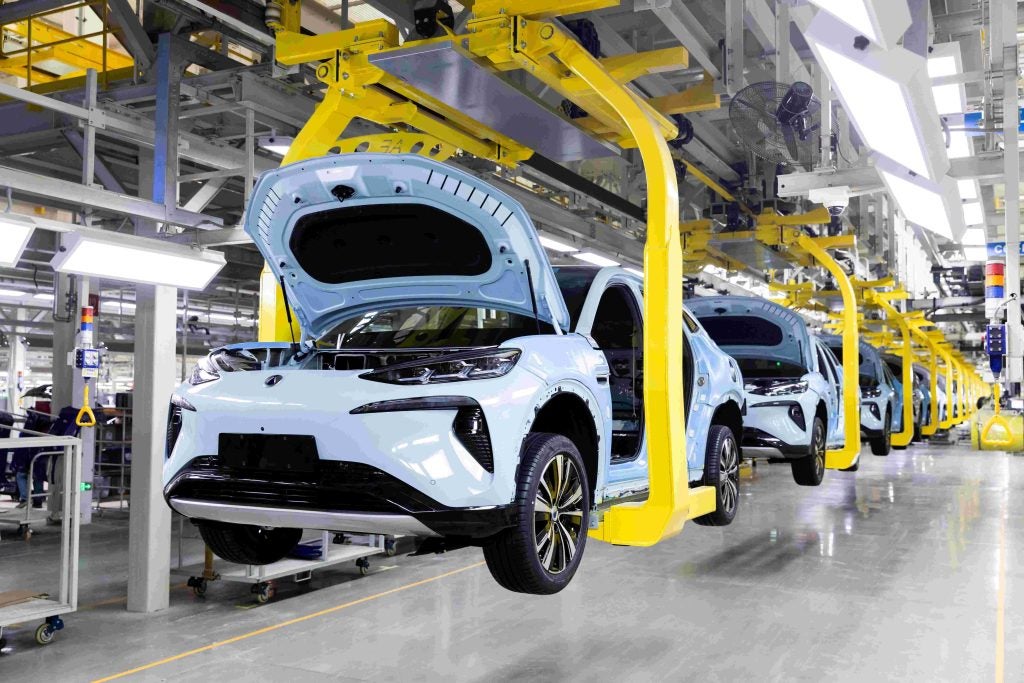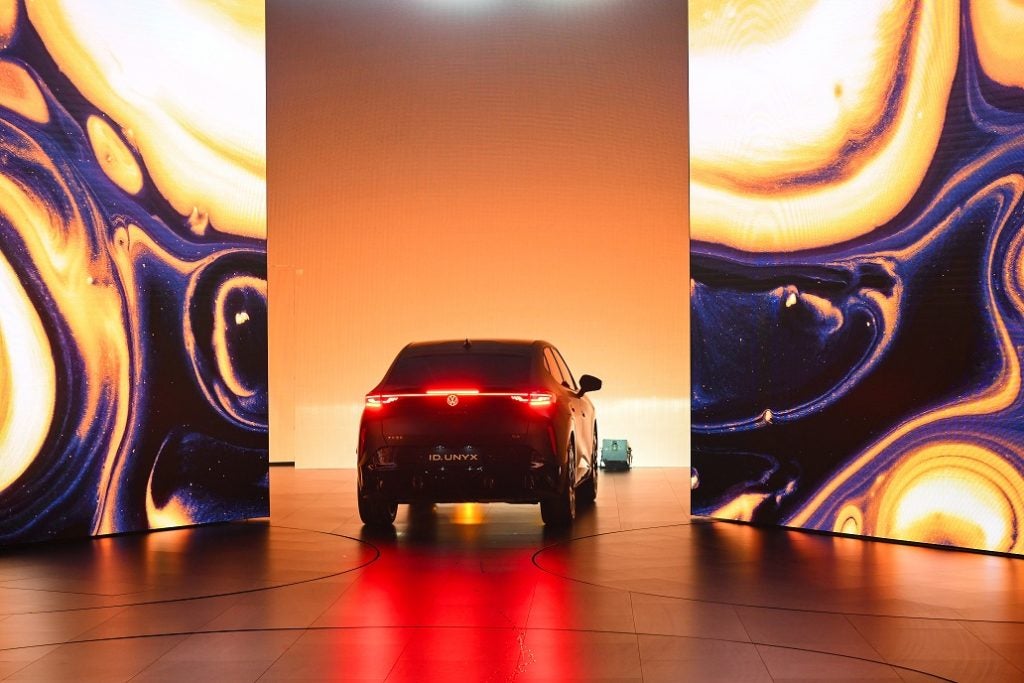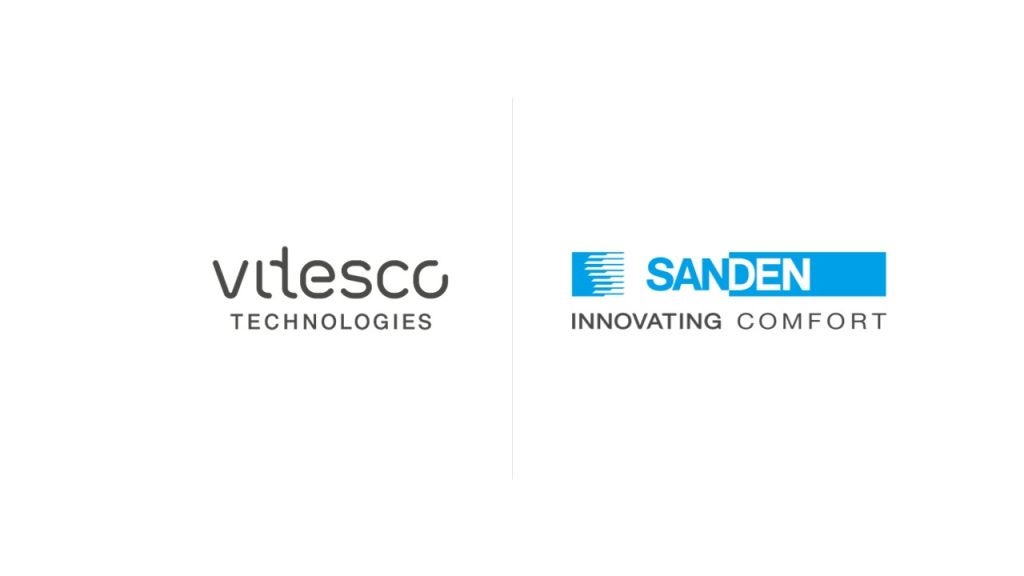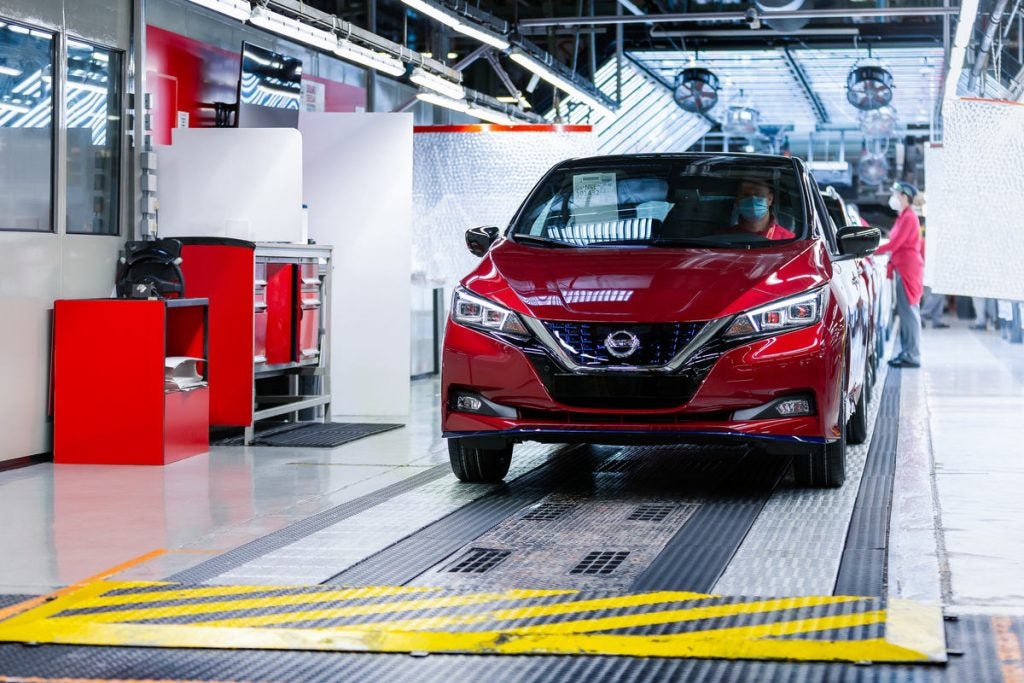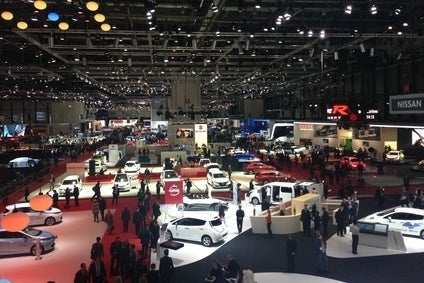
In the second part of this month’s briefing, just-auto’s future products editor, Glenn Brooks, completes his reflections on the significant trends and vehicle world premieres at the 2014 Geneva Salon de l’Automobile.
In the first part, the aim was to cover the major players in the European region. Nonetheless, there is a strong argument for breaking out a couple more of the brands of the Volkswagen Group for singular consideration. Let’s begin then with Škoda. It almost seems hard to remember when this company wasn’t successful, such has been its progress. Geneva 2014 will be remembered as the show when the brand publicly reversed roles with SEAT.
What do I mean by ‘reversed roles’? Well, consider the lurid green of Škoda’s VisionC design study, which was also a preview of a move further upmarket for the brand – we’ll see a low-roof sedan in the style of the Volkswagen CC next year, as well as other additional models such as a C/D segment SUV and probably a minivan too, by the end of 2016. Even the unveiling of the Octavia Scout shows the brand as one which can do no wrong in its parent’s eyes, and so the extra derivatives – each one the very opposite of cheap – continue to appear.
SEAT is definitely improving, and its home market is helping with that, at last. But still, additional products are taking their time to filter through the R&D pipeline, as profit is what matters most. Yes, there will be an SUV/crossover, but not yet, and the Leon family is proving a success, putting SEAT in a similar position to where Škoda was some years back.
Think of the Ibiza and León as SEAT’s core models, i.e. its Fabia and Octavia. Once these have been built up with multiple derivatives and then become more successful in multiple European markets, the extra cars will come as the brand reaches profitability. We saw this at Geneva with the arrival of the premium priced León Cupra and Cupra 280 – they won’t sell in big numbers but the pricing is high for the brand and that is where SEAT needs to be heading. Likewise, the Mango edition Mii wasn’t noticed by many but it is exactly the kind of upscale product association which has worked so well for Fiat-Lancia (the equivalent Italian fashion and luxury goods label editions of the Panda and Ypsilon).
Audi recently announced a slight dip in its own income but five billion euro in after-tax profits isn’t exactly failure. So expect ever more A and Q models to continue appearing, even if we didn’t see much activity at Geneva. The TT and TTS were the main world premieres and if the cars looked familiar, it’s probably because the styling theme that has worked so well for two generations, and now into a third, is clearly what existing and new customers want. The decluttered, ‘virtual cockpit’ as Audi calls it, is a certainty for multiple other cars but for the moment, it’s unique to the new TT. This system sees the traditional centre-dash monitor removed and puts the navigation, entertainment, connectivity or car systems information directly in front of the driver. Where the speedo, tacho and other gauges normally dwell, there is instead a high-resolution 12.3-inch virtual-display colour monitor, along with the speedometer, rev counter and other essential information. All of this replaces the conventional instrument cluster.
How well do you really know your competitors?
Access the most comprehensive Company Profiles on the market, powered by GlobalData. Save hours of research. Gain competitive edge.

Thank you!
Your download email will arrive shortly
Not ready to buy yet? Download a free sample
We are confident about the unique quality of our Company Profiles. However, we want you to make the most beneficial decision for your business, so we offer a free sample that you can download by submitting the below form
By GlobalDataThree of Audi’s rivals also had a few world premieres worthy of note at Geneva. Starting with the Clubman concept, here is the latest evidence that Mini the word continues to be the opposite of the products’ size. If the latest three-door hatch is now a B/C segment vehicle, then this is firmly in the C category. It’s 26cm longer and 17cm wider than the existing Clubman and something that looks very much like it will enter production in the final quarter of 2014. Measuring 4,223mm, this prototype is the longest Mini yet and unlike the outgoing model, there will be four conventional passenger doors, and the vertical tailgate doors are retained. Will the white wall tyres be on the options list? They really should, as they looked surprisingly cool.
On the parent company’s adjacent stand, I lifted the bonnet of the 2 Series Active Tourer to see it for myself – there it was, a transverse engine in a BMW. This model has been designed to take on the Mercedes-Benz B-Class and the US importer will also offer it, which just shows how much that market continues to change. BMW also launched its reply to the success which the Audi A5 Sportback has been enjoying, with the debut of the 4 Series Gran Coupé. I still don’t understand the logic of the model name, given that it’s smaller than the 3 Series GT.
Mercedes-Benz had what many thought to be one of the more beautiful debutantes, the S-Class Coupé, plus what is one of the more remarkable transformations of recent years, namely the major facelift of the Viano to create the V-Class. The former is the world’s first production car to be able to tilt into bends – guess what, this technology is to be a high-priced option – while the latter promises to return Mercedes to the top of the executive limo-van market.
One of the brands which really needed a new car at Geneva was smart but there were no novelties on its stand. Project W453, a four-seater model, was held over so as not to steal all the publicity from the Renault Twingo with which it will share much, including a production line in Slovenia. A two-door derivative, C453, is also due for launch within the next 12 months, and will be the direct replacement for the fortwo. As such, it will be manufactured at the smartville plant in France, on the same Renault-Daimler ‘Edison’ architecture.
One more brand in the Daimler sphere of influence is Infiniti. There are a couple of promising new models on the horizon, both of which should lift sales substantially in European markets. However, neither the Q30 hatchback nor the QX30 crossover, each one C segment sized and based on Daimler’s MFA architecture, will appear this year. Instead, Geneva played host to the arrival of an evolution of the Q50 Eau Rouge concept, which we first saw at Detroit in January. Now it has an engine, and what an engine: nothing less than a 560PS 3.8-litre biturbo V6. Did someone say Infiniti’s four-door Nissan GT-R? They ought to have. Let’s just hope it gets built and wasn’t a mere publicity seeker for a brand which is yet to make much of an impression in Europe. I suspect the name may change, as a famous corner at the Francorchamps Grand Prix circuit won’t mean much to buyers in the US, the main market for such a car.
What is also not (yet) quite a premium brand in European markets, Volvo, had a good show. The Estate Concept won a lot of admiring looks and it’s not hard to imagine this with two more doors as the follow-up to the current V70. The interior was as elegant as the exterior too. No sign of the company’s once close rival Saab but as sales of the first cars are for the Swedish market only, it would have been a surprise to see a stand. I also tried in vain to locate Spyker – Geneva wasn’t quite the same without the ever-smiling Victor Muller telling the media about the latest supercar his firm would soon begin building.
There was but one world premiere over at Porsche and that was a diesel engine for the Macan. The cars were mobbed on both press days and this C segment SUV is exactly on the money and will definitely cause a lot of problems for the Evoque. The 919 hybrid – powered by a purpose built V4 engine – was the centrepiece of the Geneva display, this Le Mans racer having been designed to defeat Audi.
McLaren Automotive had one of the sexiest premieres at the show, with bright blue and orange versions respectively of the new 650S Coupé and Spider (retractable folding hard top). But one of the more interesting developments with this company came a day or two later, when it was discovered that the 12-C, upon which the new car is based, would have a production hiatus. Coming next from McLaren will be the P13 project, a GBP120,000 supercar (2015), to be followed by the P14 project of which little is yet known, other than its launch date (2016), with P15, a new super-expensive sports car following in 2017.
McLaren’s future engine supplier, to the F1 team, that is, used Geneva to continue the slowly-slowly publicity build up to the arrival of the next NSX supercar. Here, we saw the powertrain in pre-production form, and this consists of a longitudinally mounted turbocharged V6 and a three-motor hybrid system. I’d expect the showroom-spec car to have its world premiere at the LA auto show, obviously with Acura badges, in late 2014. Cars for Europe have already been confirmed for launch in 2015.
I want to mention Tata Motors before Jaguar, as the parent firm had a couple of new models on its stand, and apart from Geneva, Tata cars are a rarity at European shows. The Zest and Bolt small cars were fresh from their world premieres at the Delhi show in February and are so far ahead of the Indigo and Indica, it’s clear that new brooms are sweeping through the engineering, styling and marketing departments. In this region, sales will be restricted to Spain, Italy and Turkey. Let’s hope the local importers drop the ungainly ride heights of the cars at Geneva – no doubt Indian-spec models.
Jaguar is beginning to purr again. There is an enormous amount of energy and money going into building this brand up. Just as the true image of Volvo cannot be clearly seen from Gothenburg, or even Sweden, so the English Midlands is not the correct place from which to observe the leaping cat. Not to put too fine a point on it, Jaguar has shaken off a long-ago reputation for dodgy build quality in all markets but no-one outside the UK, with perhaps the exception of parts of the US, knows much about this brand’s cars. I am lucky enough to travel to other European countries fairly regularly, as well as down to Asia and Australia and sad car spotting obsessive that I am, I hardly ever see a Jaguar.
Putting a 2.2-litre diesel into the XF was a good start to get that model selling in its home market, as was adding an estate but this 5 Series challenger is old and in the last year or two of its lifecycle. The F-TYPE convertible has begun some of the heavy lifting of creating a new image for Jaguar, and the new coupe will add some muscle to that but the XE is where Jaguar’s future lies. The model name for this BMW 3 Series rival was announced at Geneva, and the production car comes in 2015, with the saloon hopefully to be followed soon after by an estate, a coupe and a convertible – two bodystyles will be the minimum needed to get BMW, Audi and Mercedes-intenders considering the XE.
It seems a shame to gloss over four Japanese brands in one paragraph but Suzuki’s Celerio had been seen at the New Delhi show, MMC also had no world premieres, Subaru had one but this VIZIV 2 concept was nothing special, leaving Mazda the highlight of this grouping due to its beautiful Hazumi concept. It was easy to see the next Demio/Mazda2 in the Hazumi and this will be an obvious home for another debut at Geneva – a 1.5-litre diesel engine. I must also highlight Mazda’s stand – there is clearly a move afoot to make this a premium brand. Executives on the Ford stand next door would have done well to study the white/grey floors and all cars in toffee apple red or brilliant white. I would guess it was the company’s take on the Swiss flag and I was struck by how Audi-esque the whole thing looked. Mazda might be small and vulnerable still, albeit profitable again, but its management has to my eyes worked out exactly the right strategy for a firm of this size.
This was another European show where Qoros was the sole Chinese brand and the production version of the 3 Hatch looked even better than the prototype cars at last September’s IAA. Sales start later in 2014, with Hungary, Slovenia and the Czech Republic the trial regional markets. The company proved that it sees exactly the perceptions that it must overcome, with a large banner on its stand declaring ‘QUALITY AND SAFETY’, as well as a major mention of the five star rating it has gained from Euro NCAP.
Rolls-Royce also warrants a mention, as the Ghost Series II, a fancy name for a facelift, proved that this company is now in step with the rest of the industry – the update comes just four and a half years after the car’s launch (it took six for the Phantom to have its first refresh). There were further whispers that the SUV project is moving ahead, with 2017 now the expected launch date, and a PHEV powertrain likely.
Finally, my car of the show. The way I decide this is simple: what did I go out of my way to return to on the second press day? The Maserati Alfieri. As sales of the Quattroporte and Ghibli show, this once small division of what is now FCA is doing a lot of things right, and pulling in ever increasing amounts of cash too. Maserati’s concept was elegant yet menacing and it used the GranTurismo MC Stradale as its basis. A production version (or versions: both a coupe and a cabriolet would be ideal) is due to be launched just as the Boxster and Cayman will be reaching middle age. Jaguar looks like being the brand renaissance story of 2015, but Maserati could well be the one grabbing the same kinds of headlines come 2016 or 2017.
See also:
March 2014 management briefing: Geneva reflections (1)
just-auto’s Geneva 2014 coverage



